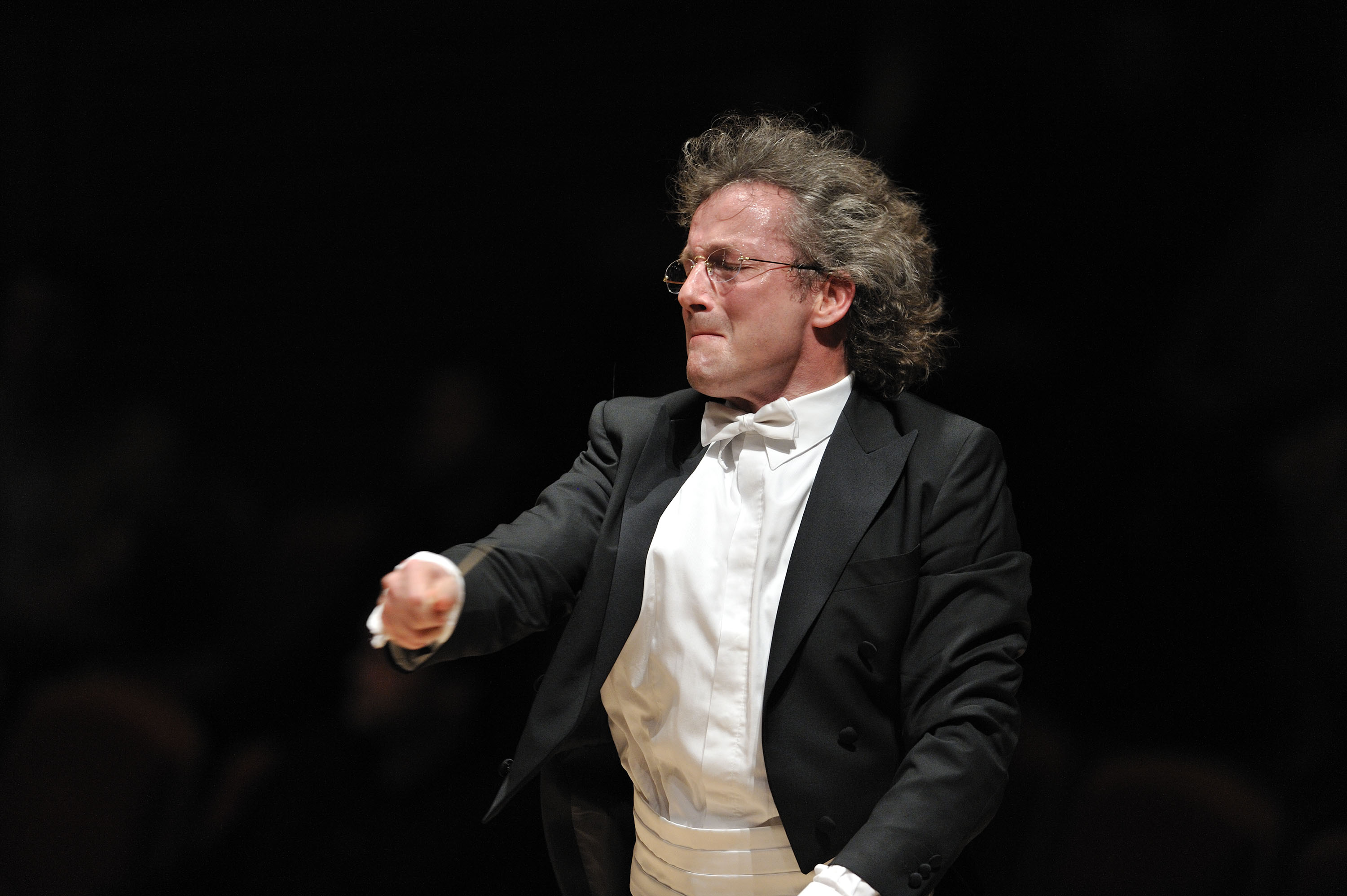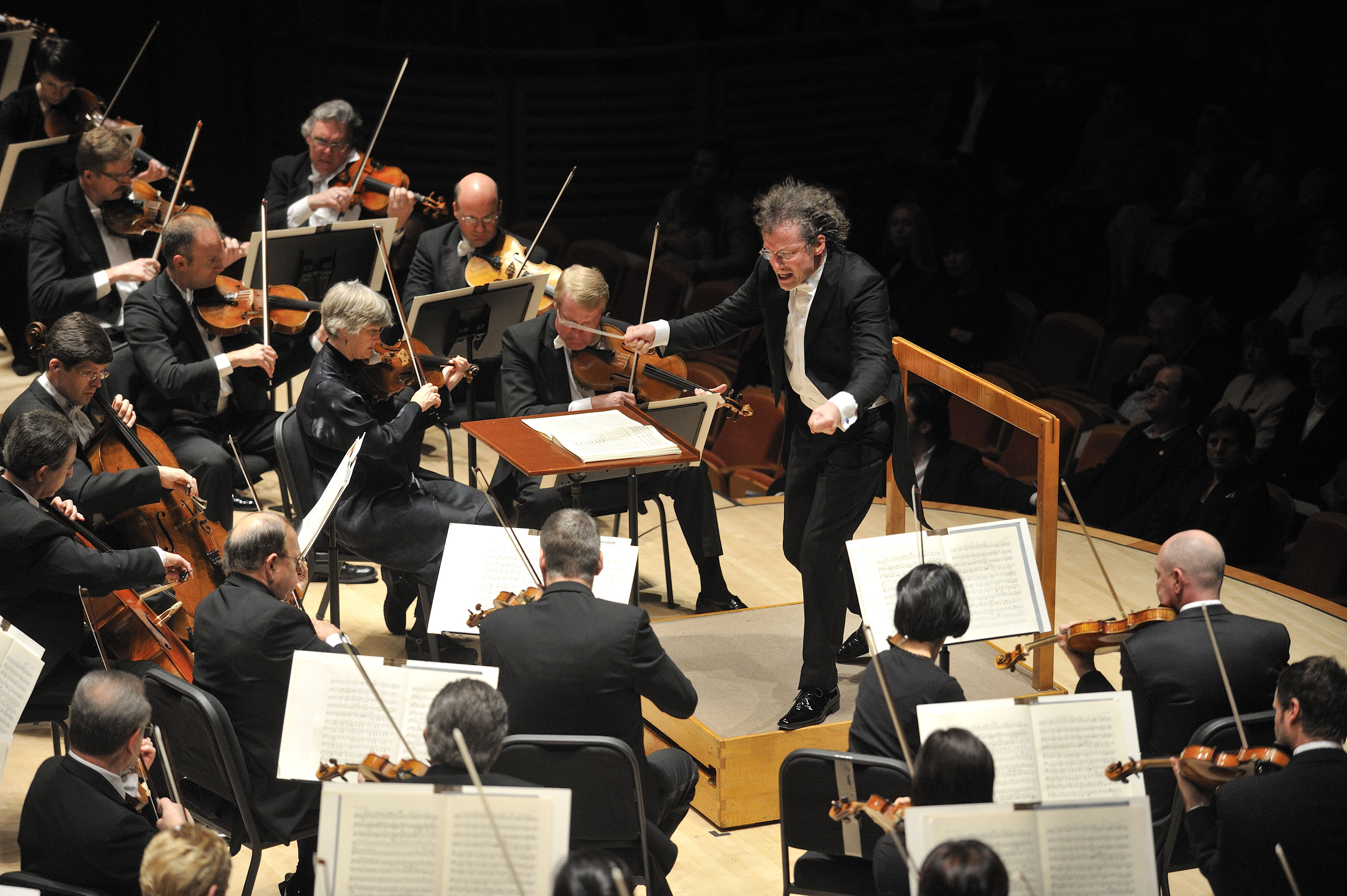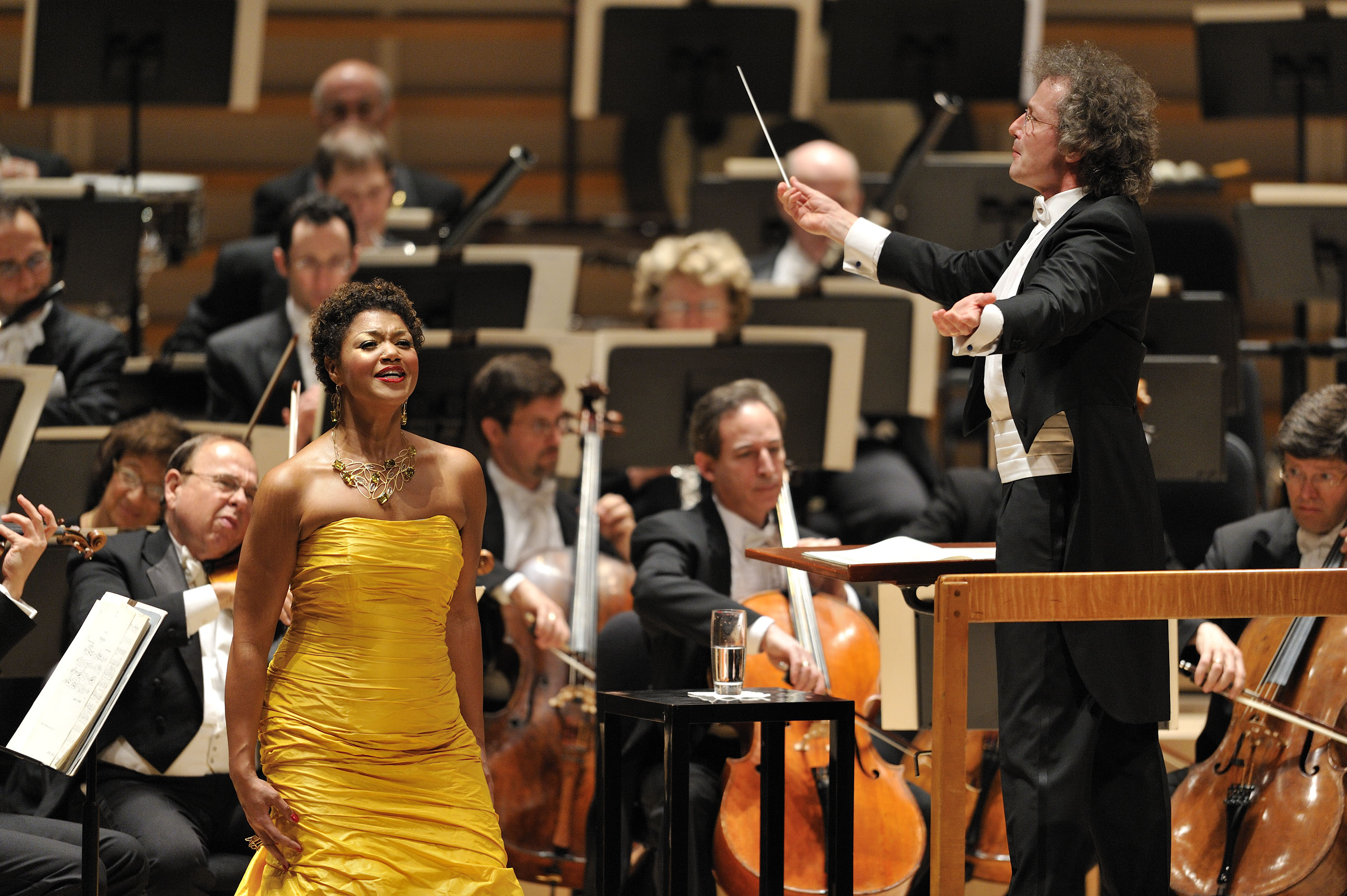Welser-Most, Cleveland Orchestra victorious in Shostakovich
 The Cleveland Orchestra opened their 2009 Miami season heard but unseen as the gold-plated pit band for Miami City Ballet’s Balanchine performances Thursday night at the Ziff Ballet Opera House.
The Cleveland Orchestra opened their 2009 Miami season heard but unseen as the gold-plated pit band for Miami City Ballet’s Balanchine performances Thursday night at the Ziff Ballet Opera House.
On Friday the celebrated ensemble moved across Biscayne Boulevard and, led by Franz Welser-Most, was highly visible and imposingly audible under the Knight Concert Hall lights in music of Wagner and Shostakovich.
Samuel Barber said that no composer should create music in wartime and, for many, Shostakovich’s Symphony No. 7, Leningrad, stands as Exhibit A. Written in 1941 while the city was besieged by the Nazi war machine, Shostakovich’s Seventh achieved instant international fame as stirring musical symbol of the Russian people’s resistance to Hitler, with Toscanini and Stokowski fighting over the rights to the U.S. premiere (Toscanini won).
While the work enjoyed vast popularity for the duration of the war, with the end of hostilities, the Leningrad was abruptly shot out of the canon, and even its former advocates came to look upon the symphony’s volume and brutality with some embarrassment. Years later, shown a copy of the score, Toscanini reportedly said, “I conducted that?!”
Welser-Most’s appearances have been inconsistent in the three years of the Cleveland Orchestra’s Miami residency, but Friday night’s powerful performance of Shostakovich’s wartime epic was a magnificent achievement across the board—a commanding, richly eloquent and scrupulously prepared performance so overwhelming in impact as to make Leningrad doubters view the symphony in an entirely new light.
The Austrian conductor is often critiqued for an interpretive style of objectivity and sobriety, but here his restraint and emphasis on balance and detail are assets in a work with theatrical elements that can easily tip over into deafening vulgarity.
Welser-Most and the Clevelanders decisively showed that there is a depth and richness in this music beyond patriotic tub-thumping. The vast span of the opening movement unfolded with atmospheric expression yet firmly sustained forward momentum, the peaceful nostalgic section having a light, airy grace with notably evocative flute and violin solos.
While the barely audible initial pizzicato of the invaders’ theme was buried by invasive coughing, the long crescendo and climax of the banal march was moulded by the conductor with extraordinary precision and patient concentration. The middle movements were just as surely charted with the bucolic expression of the scherzo and its malign central section vividly contrasted.
Welser-Most was a much more dynamic and energized figure Friday night than seen in previous Miami appearances. The musicians responded in kind—witness the third movement where a limpid string figure quickly turns to acid violence, the Cleveland strings attacking the music with daunting intensity.
With ten brass players arrayed in the high choral seating, the clamor of the hard-won victorious coda was aptly overwhelming in sonic impact but for once felt deserved, and even shorn of bombast for the desolation of the wind solos and prevailing bleakness that preceded it.
This Shostakovich marked the most successful Cleveland performance to date in Miami and, by far, the finest music-making from Welser-Most. The playing of the orchestra was astounding in its muscle and clarity, balances impeccable, and textures transparent even with the large forces and extra brass in full deafening cry.
The evening’s first half was on the same elevated level with Measha Brueggergosman as soloist in Wagner’s Wesendonck Songs.
The texts by Mathilde Wesendonck reflect the passionate liaison between Wagner and the author, wife of one of Wagner’s benefactors. Wagner’s songs offer pre-echoes of the Romantic longing and melancholy—equal parts 19th-century German poetry and philosophy—that would find full flowering in Tristan und Isolde.
The Canadian soprano possesses a voice of striking tonal beauty and crystalline purity, and her deeply engaged performance Friday night displayed the stuff of supreme artistry. Brueggergosman’s daringly terraced dynamics at times fell victim to the coughers, as in the hushed opening bars of Der Engel. The singer took an intimate approach to this music throughout, with measured tempos, which, in the central song, Im Triebhaus, was perhaps too much of a good thing.
But Brueggergosman’s sense of the long line and her sensitivity to word painting consistently illuminated the texts, as with the seamless segue from gentle pleading to ecstatic swell in Stehe Still. The soprano was at her finest in the two last settings, where her glowing vocalism and expression of the songs’ impassioned ardor and regret were precisely echoed by the shimmering delicacy of the Cleveland players under Welser-Most’s attentive accompaniment. [Photos by Roger Mastroianni.]
The program will be repeated 8 p.m. Saturday at the Adrienne Arsht Center’s Knight Concert Hall. 305-949-6722; www.adriennearshtcenter.org.
Posted in Uncategorized
Leave a Comment
Sat Jan 31, 2009
at 1:09 pm
No Comments

